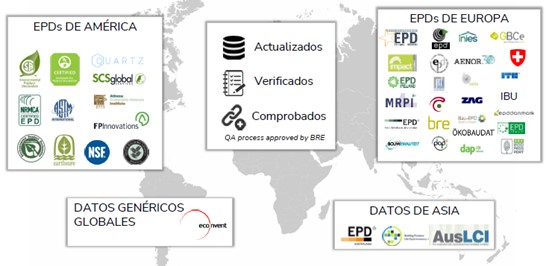Life Cycle Assessment (LCA) and Environmental Product Declaration (EPD)
Life Cycle Assessment (LCA) is a measure of the environmental impact of a product throughout its life cycle.
The objective of the environmental footprint or LCA is to carry out a multi-criteria study, allowing to identify, evaluate and quantify in an iterative way the impact that the product produces on the environment throughout its life cycle.
Once the LCA has been carried out, it is possible to make the Environmental Product Declaration (EPD), with the aim of making the study official and promoting the product on a consultation portal. It is an objective, comparable and verified declaration that provides quantified information on the potential impact of a product on the environment through the analysis of its entire life cycle.
Numerous EPDs exist in the Americas, Asia and Europe with mainly up-to-date, verified and verified data.

Regulations:
- LCA:
– UNE-EN ISO 14040:2006. Environmental management. Life cycle analysis. Principles and reference framework.
– UNE-EN ISO 14044:2006. Environmental management. Life cycle analysis. Requirements and guidelines. - LCA:
– UNE-EN ISO 14025:2010. Environmental labels and declarations. Environmental declarations type III. Principles and procedures (ISO 14025:2006).
Main objectives of having a DAP:
- Ensuring sustainable product design and production
- Informs end-customers of the environmental impact of the product or service.
- Seeks to promote responsible consumption and generate strategic business value

